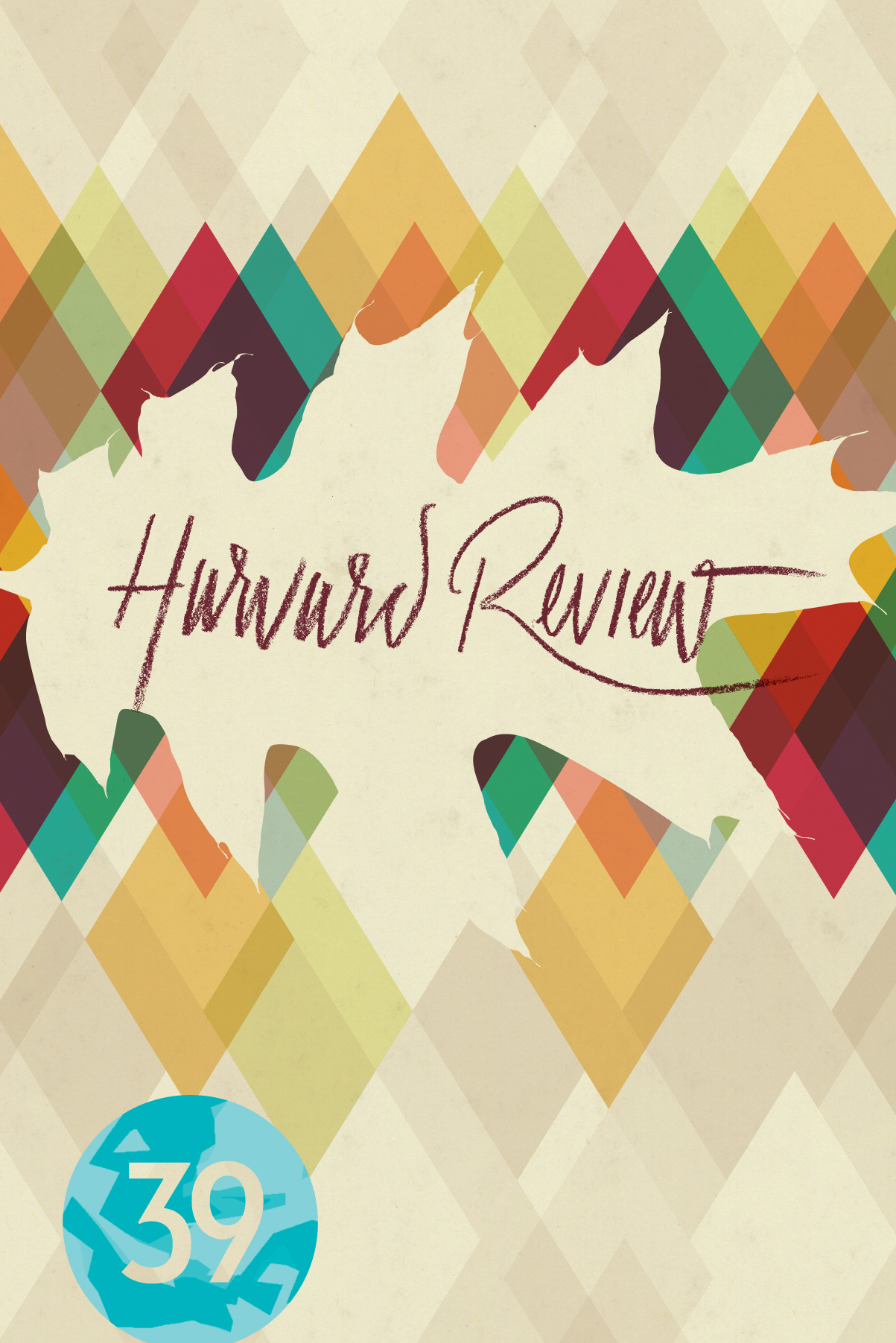HR 39 Editorial
by Christina Thompson
Lately I find that I am more and more dissatisfied with the genre categories that, by convention, we use in the table of contents at Harvard Review. There are many good reasons to use these categories: to help the reader find what he wants; to facilitate the work of series and “best of” anthology editors; to give some indication to the bookstore browser of what she is likely to find inside. But many excellent journals eschew them, and I think the arguments against them are growing all the time.
Poetry is the least problematic of the genres. Only occasionally does something really fall between poetry and fiction, or poetry and the essay, though certainly it has happened in the past. I think, for instance, of K. E. Duffin’s charming prose poems in HR 27, or Anthony Kurland’s curious anthropological essay in HR 31, which always felt like poetry to me but which we ultimately ran under the heading of fiction.
The essay category is also comparatively straightforward, but for quite the opposite reason. For many years the essay was considered a dully circumscribed kind of writing: stiff, stuffy, pedantic, improving. But toward the end of the last century, readers, writers, and significantly editors began to notice a change in public perception of the genre. In 1986 the first edition of Best American Essays appeared. In 1988, the series editor Bob Atwan wrote of “the new spirit of the American essay,” while his guest editor, Annie Dillard, humorously suggested that one purpose of the volume was “to encourage essay writers out of the closet.”
Fast forward twenty-odd years and I think we would all agree that that spirit is well and truly abroad upon the land. We are living in a decidedly nonfictional era. Reality intrigues us and the forms of writing that purport to convey something about reality are on the rise. Thus, the essay, which used to live a monkish sort of existence, has expanded out of all recognition. These days it can be almost anything: a story, a memoir, a dissertation, even apparently a list, according to John D’Agata, whose recent anthology, The Lost Origins of the Essay, stakes out a territory so large that nothing, but nothing, is excluded from the form.
One solution to our problem, then, might be to call everything an essay. But while this might work in some ways, I doubt the fiction writers would care for it. And, indeed, it is fiction that causes us the greatest trouble. One of the most common topics of discussion here at Harvard Review involves a particular kind of story, one that lacks the full-dress feel of longer fiction and reads more like what I would call an essay. Often told in the first person and focused on a single relationship or encounter, such pieces have a reflective, meditative feel, as though the author were telling a little story in order to make a broader, often existential point. This same author, however, when asked if we can include the piece under the essay heading, will typically say, “But I made it up.”
At this point I can only throw my hands up in the air. What were all those years of relentless postmodernism good for, if not to break down the dichotomy between the fictional and the real? Fiction has always been understood to be “true” in the deepest sense, even though the characters and settings may be imagined. Likewise, what we call nonfiction has always been at least partially made up—chronologies reorganized, details fudged, some elements exaggerated, others suppressed. Actual, literal reality has never made good copy, as everyone since Herodotus has known.
So, what shall we do? Squash everything back into the old boxes? Dispense with categories altogether? Invent new terminologies for work that seems neither here nor there? In this issue we have opted for the last, adding a section called “Stories from Life” for a type of story that seems particularly close to the essayistic bone. Whether it is quite the right description for pieces that lie on the spectrum between fiction and essay remains to be seen. But we need to move past the idea that writing is fundamentally fictional or nonfictional, true or false, narrative or expository, because, for whatever the reason, that just isn’t how people are writing these days.
Published on November 10, 2024
First published in Harvard Review 39

